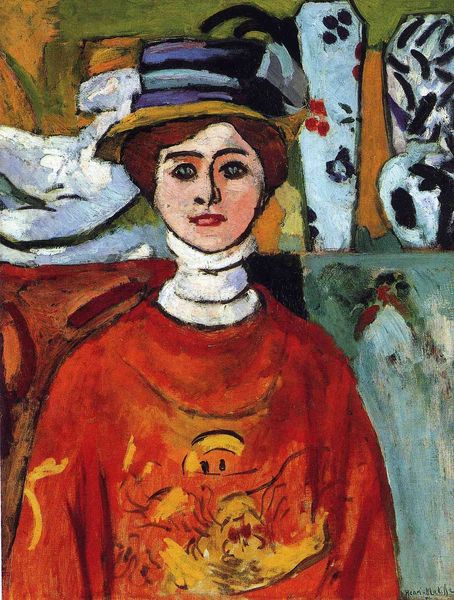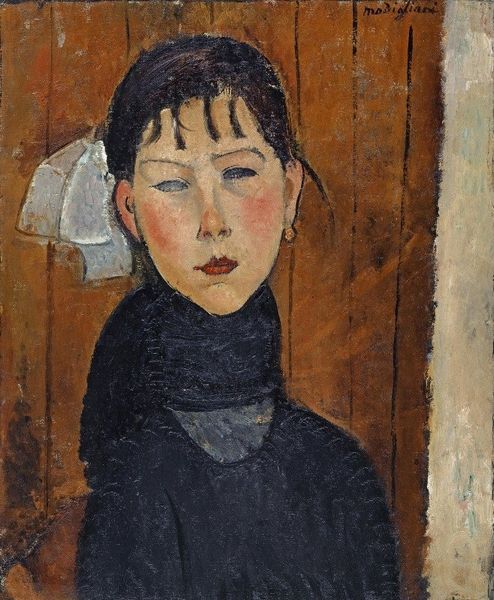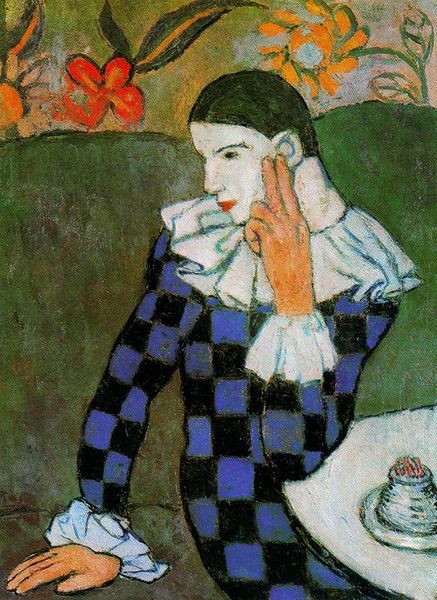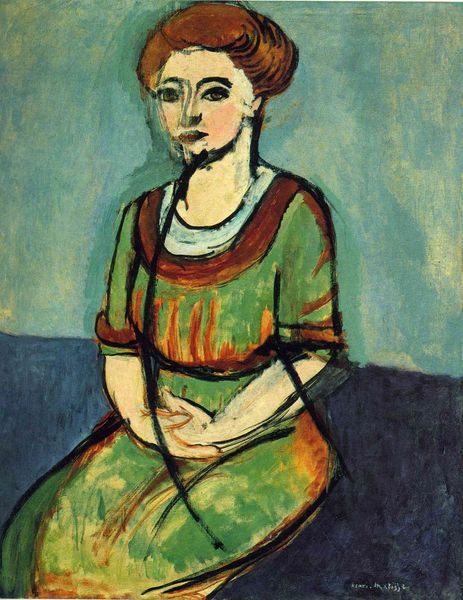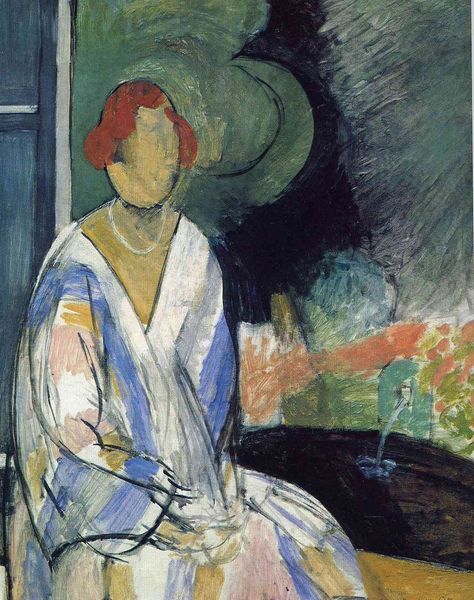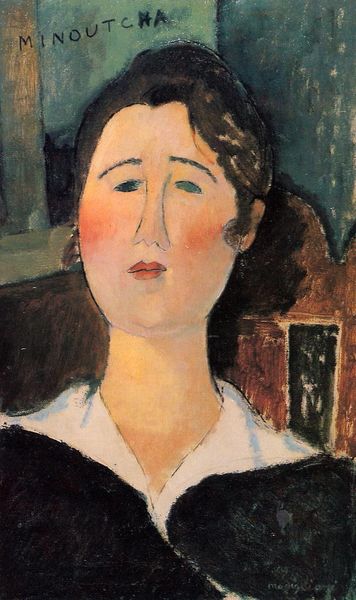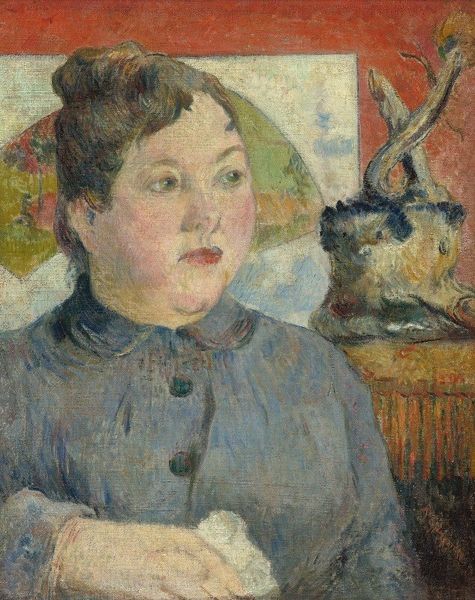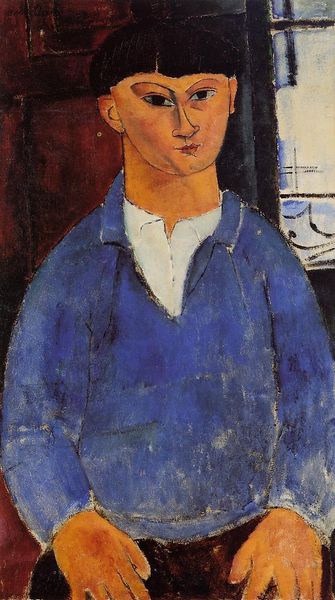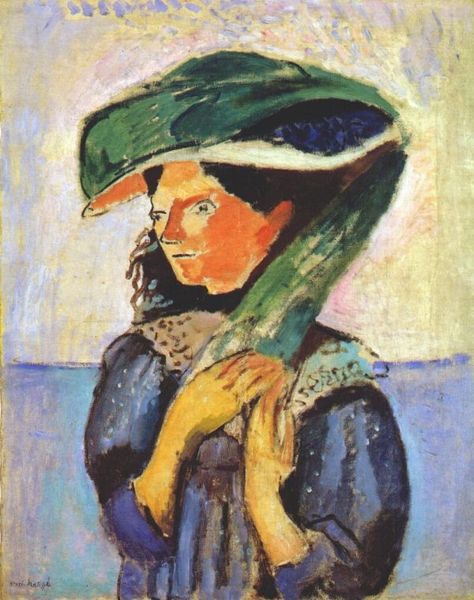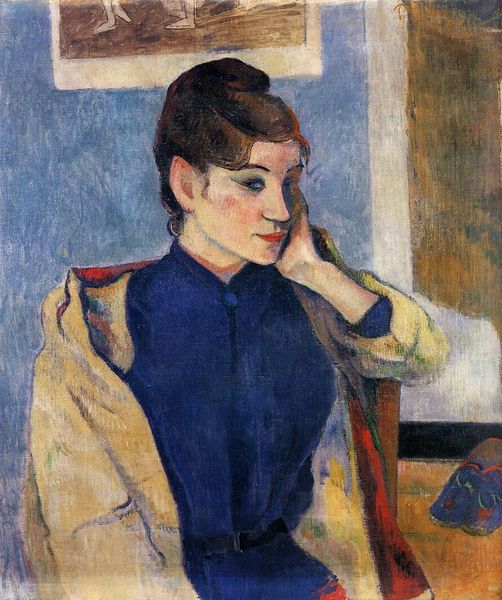
painting, oil-paint
#
portrait
#
painting
#
impressionism
#
oil-paint
#
figuration
#
oil painting
#
naive art
#
genre-painting
#
post-impressionism
Dimensions: 46 x 38 cm
Copyright: Public domain
Curator: Immediately, I am struck by her introspective gaze; a mix of melancholy and defiance. It makes me question her position, her place in society as a young Breton woman in 1889. Editor: That downcast look is certainly evocative. Let’s consider the artwork more broadly. This is Paul Gauguin’s “Young Breton Woman,” a compelling oil on canvas. Notice how the vibrant colors seem to contradict the somber mood. Curator: Precisely. Gauguin's application of bold blues, yellows and greens clashes brilliantly with what one might expect. It's essential to consider this through a lens of cultural anthropology: the symbol of the youthful, marginalized woman set against a colorful dreamlike landscape, almost challenging our conventional view of idyllic Breton life. Editor: And notice the figures behind her. Are those religious icons on a table or windowsill? They suggest a reverence for something beyond the physical world. Consider the vase—does that have religious associations? There are other narratives intertwined with this portrait, an interesting mix of traditional symbolism. Curator: Absolutely. It speaks to Gauguin's fascination with ‘primitive’ cultures. I'm wary of the romanticized perspective, the Western male gaze capturing a ‘pure’ culture. What agency did this young woman have in how she was represented? What does it mean that it hangs in a private collection now? It’s difficult to untangle the colonial threads, the dynamics of power. Editor: It is, and that’s an essential point to consider. Yet, looking at the formal elements, the composition—the subject bisects the foreground from the fantasy landscape. Does that landscape suggest otherworldliness? He seems to give her that sense of a mythic persona as well, though what he meant, of course, is the source of some speculation today. Curator: It is, but to bring this back around, she is also representative of women's lives during that era in French history. By bringing forth historical information we can see how identity can affect the understanding and meaning of art. We must not view through our lenses, we must bring her to ours. Editor: Indeed, it invites us to remember the emotional weight symbols carried in 19th century Brittany. Thank you for illuminating the piece through this complex lens. Curator: My pleasure. It's necessary to think beyond the paint, the art itself; instead to understand it through political and personal means. It encourages a vital discussion about our assumptions around cultural exchange and artistic creation.
Comments
No comments
Be the first to comment and join the conversation on the ultimate creative platform.
